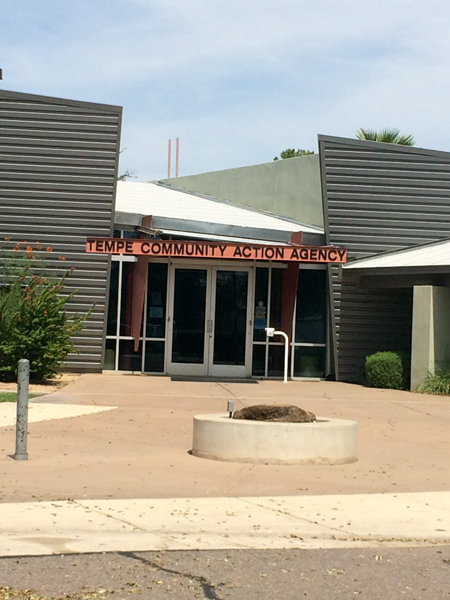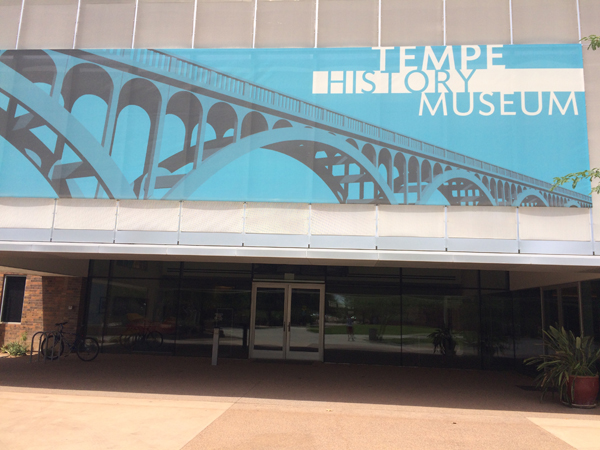By John Bello

TCAA started in the late 1960s as a community project to serve the citizens of Tempe and Scottsdale. In 1971, TCAA developed into more than just a community project and took on new roles in serving the residence of Tempe. Over the years, TCAA has grown through diverse projects serving to the community. At the start, only a handful of projects, senior action programs, food bank services, and community action programs, were available. Today, TCAA has continued these initial projects and added more programs, I-Help, emergency services, Pre and Post-Natal services, and others. The growth of TCAA's projects displays a growth and need for these services in Tempe and other local areas. TCAA is has a positive impact on residence lives and improving their quality of life.
Tempe History Museum is a community museum that is free to the public and offers different programs that engage the residents of Tempe. The museum looks to the community to find partners and gives them space to tell their story to the public. Members of the community often approached Tempe History Museum to ask for help in telling their stories in exhibit form. Tempe History Museum engages the local history of Tempe through the stories of the residences and provides an environment for them to engage and reach new communities.
The partnership between these two organizations will result in an exhibit consisting of four freestanding structures that present TCAA's four core messages, Programs, Partners, People, and Impact. It is designed to be portable and weather proof, so it can travel to multiple locations around the community. The exhibit will act as a pop-up museum, going to high foot traffic areas to gain maximum exposure to the public as well as to venues like community centers where TCAA provides it services to those in need. The exhibit is intended to engage a different type of community. It will inform the residence of Tempe and other local areas of the services provided by TCAA and will engage the visitor in self-reflection and will create a space where visitors can contemplate joining TCAA in a number of ways, including volunteering or donating. The exhibit will also invite viewers to receive TCAA services if they have a need. There is a strong need for this type of engagement with the general public because TCAA is not well known in Tempe despite all of the great programs they provide for the community.
To compliment this project, I am developing a procedure for evaluating the impact and reach of the exhibit. The community evaluation program seeks to address whom TCAA and Tempe History Museum serves. Will the exhibit change the visitor’s perception on going to museums and does it encourage them to follow up with TCAA? The previous statements are the central to the evaluation of the exhibit and the community project. A notebook will be used to engage the visitors in these questions and allow for them to freely respond. Additionally, surveys will be provided that will probe the visitors experience and their perception of TCAA through the exhibit. The surveys will be used to judge the impact of the exhibit along with recording the number of individuals that receive services or offer to support TCAA after the exhibit opens. Positive feedback on the surveys, an increase in support to TCAA, and an increase in services provided to members of the community are the goals of the evaluation project.
Community museums are facilitating change in museum practice. Community museums engage and draw different types of visitors. The partnership between TCAA and Tempe History Museum presents the changing face of many museums. There is a focus on developing community partnerships that will bring success to both institutions. No matter how many people come and see the exhibit there is an underlying success in the foundation of a new partnership between these two very different community organizations.
John Bello is a graduate student at Arizona State University studying Museum Studies. His focus in the program is on community engagement and museum education. John also currently supports multiple museums across the Valley in a variety of roles, working on exhibits, providing tours, and other tasks.









Comments
Can you explain more about the project
Hello,
Sounds intriguing, but can you elaborate how and what you will be doing at these sites.? Thank you. My museum theatre work is often with disenfranchised communities and helping to engage them through oral history performance presentations. website: www.h-tac.com hlynn@umbc.edu 443-630-5312
Add new comment